- (i) Data can be encoded efficiently using Huffman Codes.
- (ii) It is a widely used and beneficial technique for compressing data.
- (iii) Huffman's greedy algorithm uses a table of the frequencies of occurrences of each character to build up an optimal way of representing each character as a binary string.
Suppose we have 105 characters in a data file. Normal Storage: 8 bits per character (ASCII) - 8 x 105 bits in a file. But we want to compress the file and save it compactly. Suppose only six characters appear in the file:

How can we represent the data in a Compact way?
(i) Fixed length Code: Each letter represented by an equal number of bits. With a fixed length code, at least 3 bits per character:
For example:
a 000 b 001 c 010 d 011 e 100 f 101
For a file with 105 characters, we need 3 x 105 bits.
(ii) A variable-length code: It can do considerably better than a fixed-length code, by giving many characters short code words and infrequent character long codewords.
For example:
a 0
b 101
c 100
d 111
e 1101
f 1100
Number of bits = (45 x 1 + 13 x 3 + 12 x 3 + 16 x 3 + 9 x 4 + 5 x 4) x 1000
= 2.24 x 105bitsThus, 224,000 bits to represent the file, a saving of approximately 25%.This is an optimal character code for this file.
Prefix Codes:
The prefixes of an encoding of one character must not be equal to complete encoding of another character, e.g., 1100 and 11001 are not valid codes because 1100 is a prefix of some other code word is called prefix codes.
Prefix codes are desirable because they clarify encoding and decoding. Encoding is always simple for any binary character code; we concatenate the code words describing each character of the file. Decoding is also quite comfortable with a prefix code. Since no codeword is a prefix of any other, the codeword that starts with an encoded data is unambiguous.
Greedy Algorithm for constructing a Huffman Code:
Huffman invented a greedy algorithm that creates an optimal prefix code called a Huffman Code.

The algorithm builds the tree T analogous to the optimal code in a bottom-up manner. It starts with a set of |C| leaves (C is the number of characters) and performs |C| - 1 'merging' operations to create the final tree. In the Huffman algorithm 'n' denotes the quantity of a set of characters, z indicates the parent node, and x & y are the left & right child of z respectively.
Algorithm of Huffman Code
Huffman (C)1. n=|C|2. Q ← C3. for i=1 to n-14. do5. z= allocate-Node ()6. x= left[z]=Extract-Min(Q)7. y= right[z] =Extract-Min(Q)8. f [z]=f[x]+f[y]9. Insert (Q, z)10. return Extract-Min (Q)
Example: Find an optimal Huffman Code for the following set of frequencies:
a: 50 b: 25 c: 15 d: 40 e: 75
Solution:
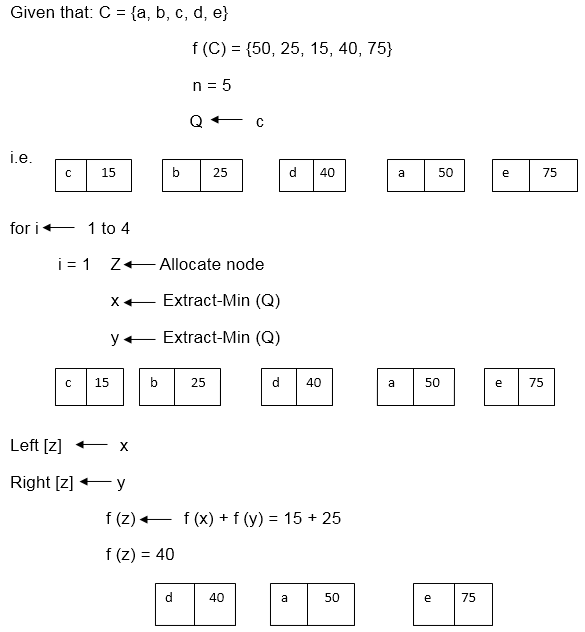
i.e.
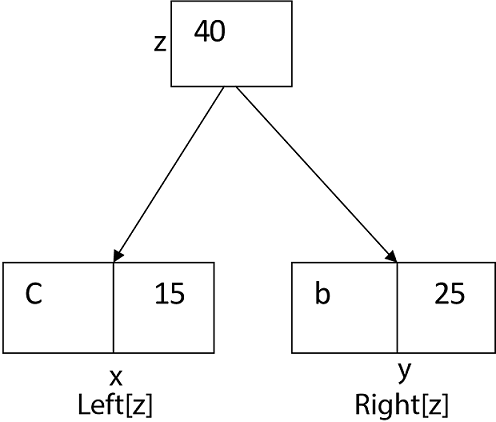
Again for i=2
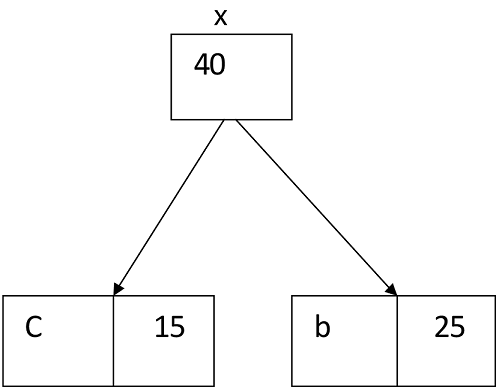
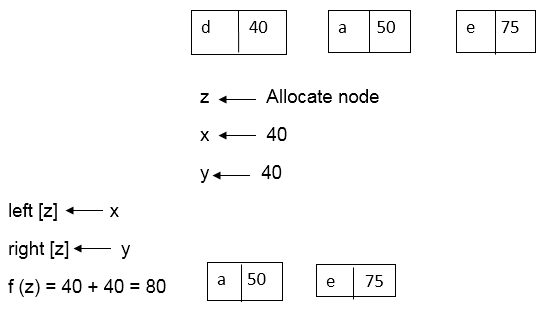
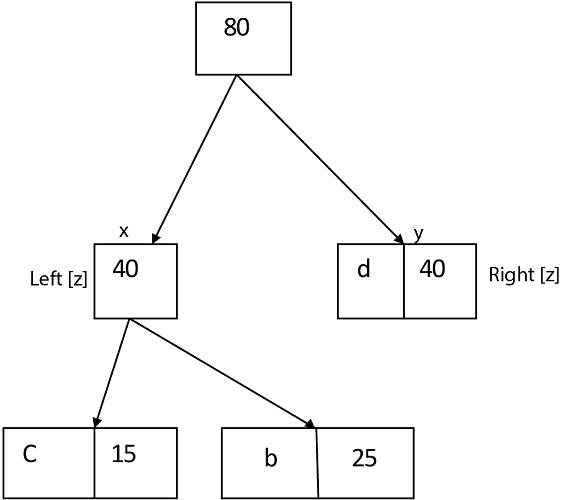
Similarly, we apply the same process we get
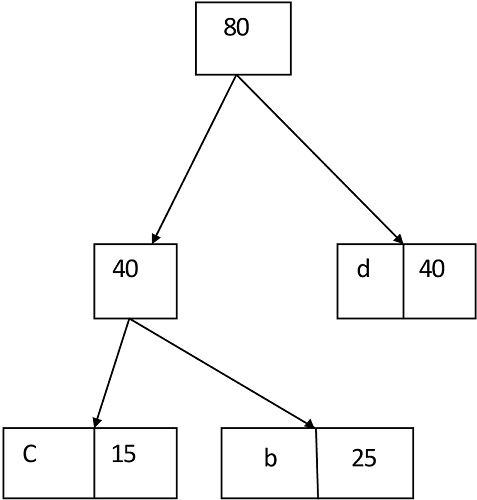
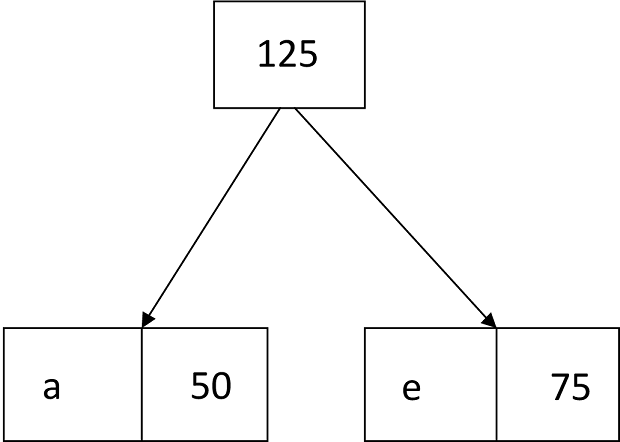
Thus, the final output is:
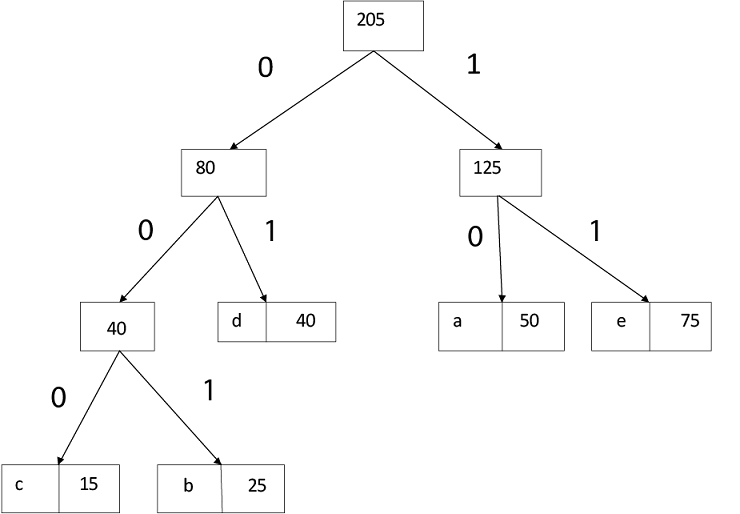






No comments:
Post a Comment